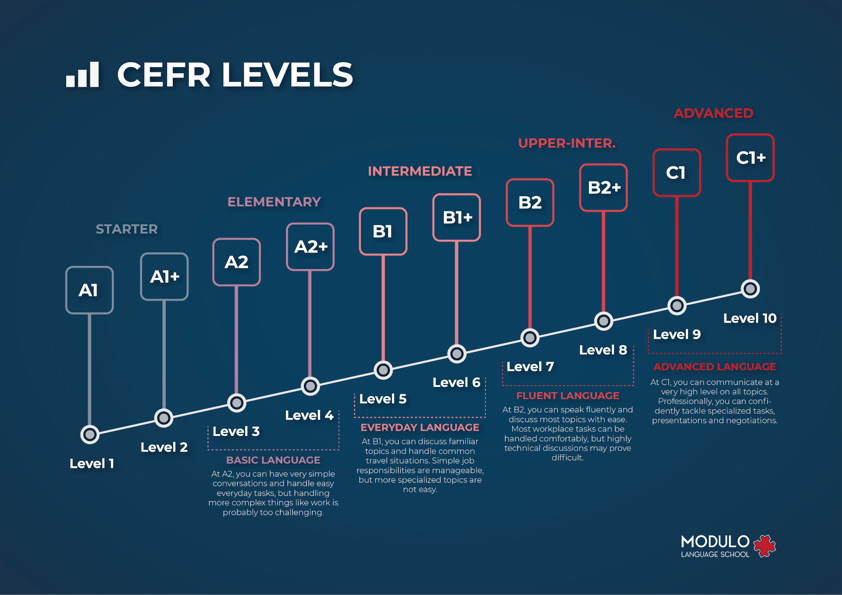CEFR
CEFR Levels used at Modulo Language School
Modulo uses the Common European Framework of Reference to help our students progress
Modulo
Experience
We guide you step by step
- Step 1 First contact Contact us Getting in touch with one of our language advisors is the first step to successful language learning. Whether you call or message us, we will take good care of you and ensure you get the personalized learning experience you deserve.
- Step 2 Wants Wants analysis What you want is at the heart of everything we do at Modulo. We will ask you a few questions about your goals and dreams, about how you plan on using the language, and about how you prefer to improve your skills.
- Step 3 Needs Assessment/Demo Let's find out what you need. Book an appointment with one of our teachers to analyze your strengths and weaknesses in a relaxed environment. If you're a beginner, we will teach your first lesson to show you what we can do.
- Step 4 Solution Personalized solution Now that we know what you want and what you need, we can work together to find the best possible solution so you can reach your objectives. We will recommend a level to study at and a specific course to follow, as well as a detailed timeline.
- Step 5 Learning Studying the language Not only will you study with our excellent Modulo teachers, we will ensure your progress and satisfaction with regular Checkpoint units and ask you for feedback on how the course is going so we can continue improving your learning experience.
Levels
Descriptions
An overview of the CEFR levels at Modulo
| Level group | Level group name | Level | Level name | Description |
|---|---|---|---|---|
| A | Basic User | A1 | Breakthrough or beginner |
|
| A2 | Waystage or elementary |
|
||
| B | Independent User | B1 | Threshold or intermediate |
|
| B2 | Vantage or upper intermediate |
|
||
| C | Proficient User | C1 | Effective Operational Proficiency or advanced |
|
| C2 | Mastery or proficiency |
|
